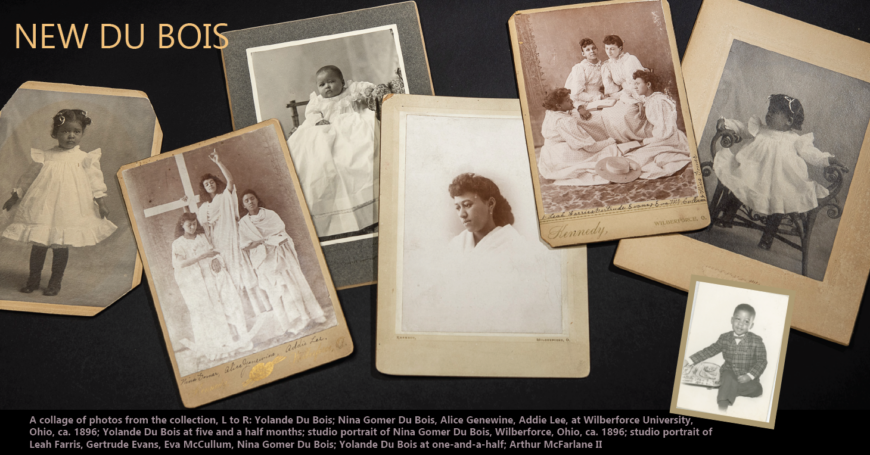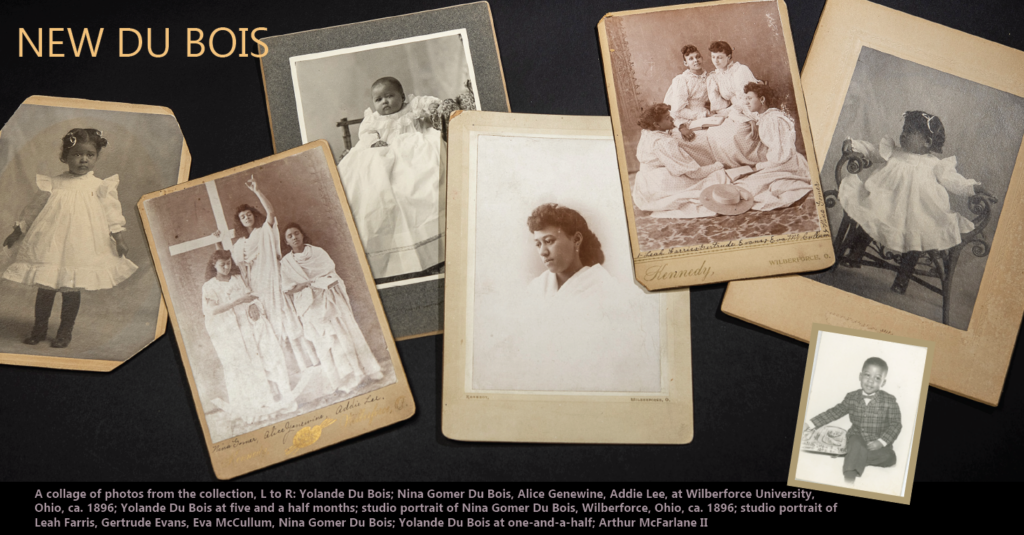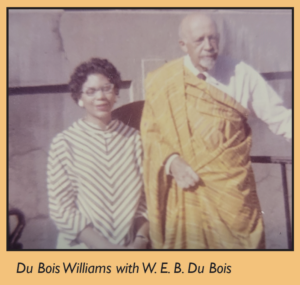
New Du Bois Materials Arrive at UMass Libraries
Du Bois Williams, W. E. B. Du Bois’s only grandchild, kept photographs, letters, and other documents related to her parents and grandparents. Thanks to her son, Arthur Edward McFarlane II, many of those materials and Williams’s own papers have recently joined the Du Bois collection in the Robert S. Cox Special Collections and University Archives Research Center. This collection is the largest new set of Du Bois materials made public in decades.

Du Bois Williams, the only grandchild of W. E. B. Du Bois, spent much of her early life at her grandfather’s side. In her own life, as a teacher and mentor, she continued the family tradition of scholarship combined with advocacy for social justice. She also helped to preserve the legacy of her illustrious grandfather through interviews, lectures, and oral histories.
Du Bois Williams dedicated her life to the study of psychology, helping to pioneer the field of community psychology. She worked for social justice within the healthcare system, especially for people of color. This work both followed in her grandfather’s footsteps and anticipated the disproportionate effects we have seen in our own time of the COVID-19 pandemic on underserved communities.
Williams kept photographs, letters, and other documents related to her parents and grandparents. Thanks to her son, Arthur Edward McFarlane II, many of those materials and Williams’s own papers have recently joined the Du Bois collection in the Robert S. Cox Special Collections and University Archives Research Center. This collection is the largest new set of Du Bois materials made public in decades.
These additions to the most-used special collection held by the Libraries shed new light on Du Bois’s family life, including on the overlooked figure of Nina, his wife of over 50 years until her death in 1950. Du Bois wrote that he wasn’t always “what one would call an ideal husband”; he left behind few personal recollections of their married life. The Du Bois Williams materials include photographs of Nina as a student when she met her future spouse. As Du Bois’s wife, Nina endured the same prejudice, fear, and grief as her husband, but without his accolades and celebrity. Scholars now have a chance to more fully understand her, and the Du Bois maternal line contained in the new materials through Nina’s daughter, Yolande Du Bois, and granddaughter, Du Bois Williams.

“Like her grandfather, Du Bois Williams was a collector of artifacts and, it seems, documented her life with intentionality,” says Phillip Luke Sinitiere, Du Bois Scholar in Residence, who was able to get an early look at the new materials this past summer. “While her collecting parallels her grandfather’s, what she saved illustrates how she forged her own path in relation to the family legacy.” This collection not only enhances the W. E. B. Du Bois Papers, “it also establishes the archival legacy of Du Bois Williams in her own right. She lived a remarkable life and, like her grandfather, was a constant advocate for social justice, and a devoted teacher.”
The Du Bois Williams collection fills important gaps in the story of W. E. B. Du Bois while also providing a testimony to a remarkable life of leadership, teaching, and advocacy on behalf of causes that are of enormous relevance today.
—Adam Holmes
Assistant Director, W. E. B. Du Bois Center